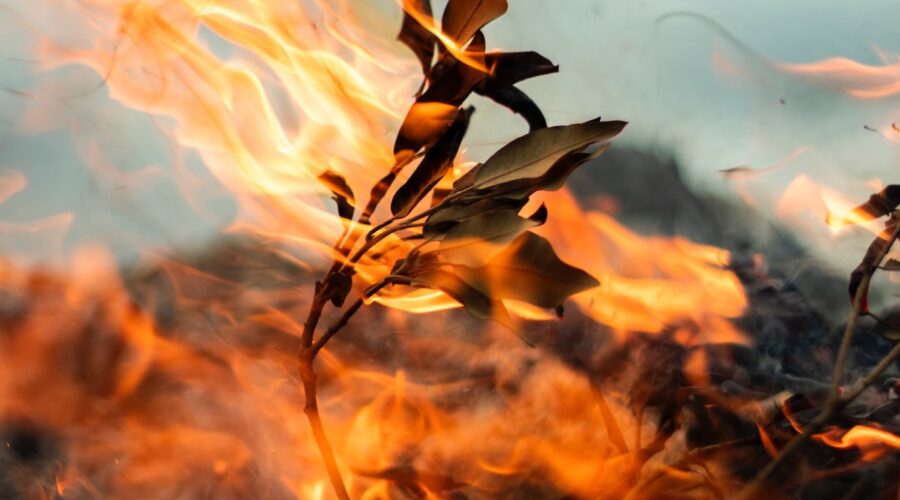For its many dreadful consequences, Covid-19 has – even if momentarily – led to a drastic reduction in greenhouse gas (GHG) emissions around the globe. For many countries, the pandemic also creates an opportunity to devise more ambitious climate measures and climate-oriented stimulus packages, resetting the old carbon-intensive machinery.
Not for Brazil, unfortunately. The country is now battered by the full force of the pandemic, which is wreaking havoc over its health and economic sectors with no environmental silver lining in sight. In fact, absolute GHG emissions in Brazil are projected to increase between 10 to 20 percent, from 1.9 billion in 2018 to 2.1-2.3 billion tonnes of CO2e in 2020. All due to enormous growth in deforestation rates in the Amazon.[1]
It is almost as if Brazilian forests are suffering from an early and unique strain of the Covid family – one we term here ‘Bolsonaro-19’. The effects of Bolsonaro-19 are spreading rapidly, exponentially multiplying the drivers of deforestation and leaving a trail of casualties in Brazilian’s most important ecosystems.
The loss of primary older forests is accelerating under Bolsonaro
This is, of course, not to say that forests were thriving in Brazil before Bolsonaro was sworn in in 2019, on the contrary. But much like Covid-19 takes its biggest toll on the elderly and those already in sickness, Bolsonaro-19 is accelerating the loss of primary older forests and natural habitats at an unforeseen speed.
It is also true that, in contrast to what happens in the energy sector, recessions often result in more (rather than fewer) GHG emissions in the forest sector, as smallholders and communities have little means other than to encroach into nature to ensure their immediate survival. But the bulk of Brazil’s deforestation problem is unrelated to the need to maintain local livelihoods. It is first and foremost the result of illegal land grabbing and speculation followed by the onset of large ranching and agricultural enterprises.
In this context, Bolsonaro and his right arm – the environmental minister Ricardo Salles – are playing a disproportionate (and infectious) role in the dissemination of deforestation. First by pulling apart the existing forest governance and patrolling system, effectively choking the key Brazilian environmental protection agencies, Ibama and ICMBio. Second by adopting a populist discourse that encourages producers to ignore forest laws and sparks more violence in already conflict-prone areas.
The Atlantic Forest as an intensive care patient
The Atlantic Forest is already in a particularly fragile state and may not recover from the first wave of Boslonaro-19 (expected to last until the end of 2022). With nearly 90 percent of its original forest and mangrove coverage gone, deforestation in the Atlantic Forest grew 27 percent (14,502 hectares) between 2018 and 2019, with forest loss concentrated in a few states, in particular, Minas Gerais.[2]
To complicate things further, with a simple administrative act,[3] the minister of environment overruled a long-held understanding that the Atlantic Forest Law – specifically designed to protect the biome – takes precedence over the more general Forest Code. The impact of this act, if upheld in court, is to legitimize previously illegal encroachment into natural preservation areas and cancel thousands of fines and administrative proceedings issued against non-authorized interventions.[4]
The Amazon Forest shows record-breaking fever
The Amazon is also showing severe symptoms of this unique Brazilian infection. These include very high temperatures from widespread forest fires sparked by uncontrolled clearing, as well as acute respiratory syndrome from continued forest loss that heavily curtails Amazon’s evapotranspiration process. From August 2019 to April 2020 deforestation in the Amazon reached over 550,000 hectares – a 94 percent increase compared to the same preceding period. This April alone deforestation was roughly 64 percent higher than April last year.[5]
One of the legal measures proposed by the current Administration would move the threshold for regularizing illegal deforestation from 2008 – as defined by the revised Forest Code – to 2012, legitimizing the illegal occupation of federal lands that took place during the intervening period. In its original version, the measure would also allow occupants of areas up to 1,500 hectares (if located in the Amazon) to self-declare the boundaries of their claimed property, their environmental compliance status, and the existence of land conflicts. The final checking of information would be done via remote sensing.[6]
With the people and indigenous communities of the Brazilian northern states being dramatically impacted by Covid-19, and the forest enduring the pervasive effects of Bolsonaro-19, chances are that devastation in the Amazon will be sweeping and long-lasting. But a drug already well-known to Brazilians is now being re-introduced and may – ironically and incongruously – offer a gleam of hope to the region: military intervention.
During the Brazilian dictatorial period, the military was largely used as a vessel to ‘advance the development’ of the Amazon, but this very same drug is now being re-purposed in the hopes of protecting the forest and preventing extreme fires. A military mission titled Green Operation Brazil – created through the ‘Decree to Secure Maintenance of Law and Order’ – is deploying troops to patrol certain forest areas and stop illegal logging and mining activities.
The military could indeed provide temporary relief for it is now the only institution left with the means and resources for this type of large-scale surveillance exercise. But much like using hydroxychloroquine as a treatment for Covid-19, there is no clarity on whether military presence in the Amazon can be effective, which areas are actually being targeted, and what the effects of such intervention will be. Ultimately, there is little evidence that employing the military to ‘defend’ the Amazon can do more good than harm, in particular, if this antidote is administrated on a continued basis and without transparency and adequate societal supervision.
From within, Brazilians at this moment can probably only hope for the best. From the outside, we all must urge countries and companies to, at the bare minimum, carry out their proper due diligence before investing in and purchasing commodities from forest-risk areas in Brazil.
Footnotes:
[1] Sistema de Estimativas de Emissões e Remoções de Gases de Efeito Estufa (SEEG) and Observatório do Clima. Nota Técnica from May 2020.
[2] Folha de São Paulo in ‘Desmatamento na mata atlântica cresce 27% entre 2018 e o primeiro ano do governo Bolsonaro’ from 27 May 2020.
[3] Despacho 4410/2020.
[4] Ministério Publico Federal in ‘MPF propõe ação para anular despacho do Ministério do Meio Ambiente que coloca em risco a preservação da Mata Atlântica’ from 6 May 2020.
[5] Plataforma Terrabrailis, Deter (INPE).
[6] Provisional Measure 910/2019. The original version has meanwhile been modified and converted into Bill of Law 2633/2020.


